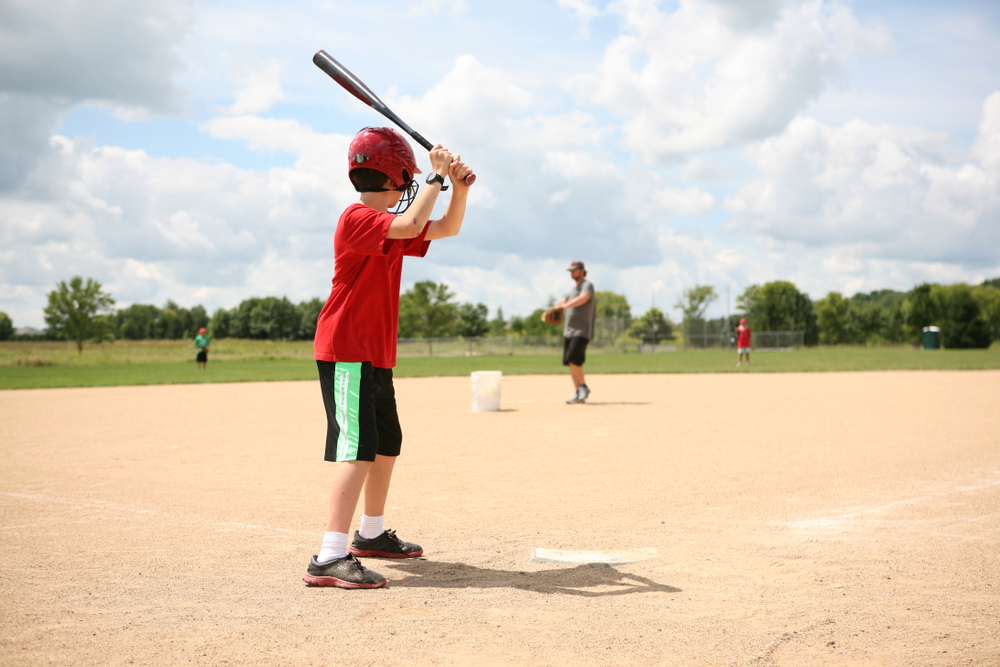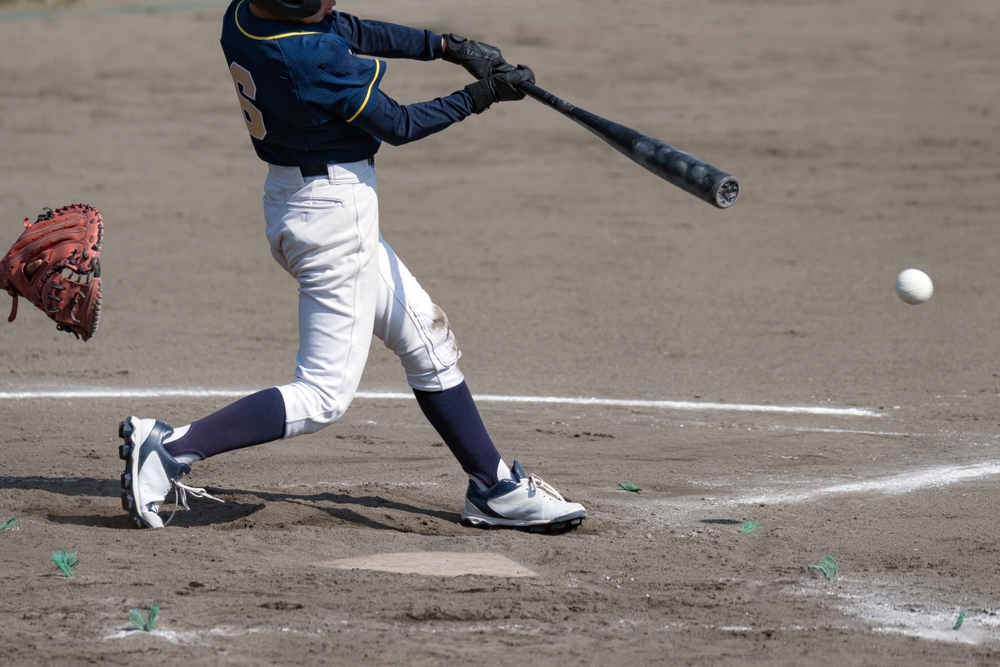Training your youth baseball team in the art of baseball requires more than just passion for the sport. It requires an organized practice schedule, a strategic approach to skill development, and, most importantly, a healthy dose of fun and engagement.
Read our sample youth baseball practice schedule to help manage your team between games.
A Well-Structured Youth Baseball Practice Schedule Is Important for Keeping a Routine
Having a solid youth baseball practice schedule is like catching a pop fly. It’s a critical move that can change the game. With an orderly youth baseball practice schedule, coaches get to steer young players through the ins and outs of baseball. More importantly, a practice schedule offers a blueprint that structures every drill, every strategy session, and every scrimmage. What’s more, it’s the secret weapon that fosters a culture of discipline and concentration, teaching these budding athletes the value of consistency while also having fun playing the game they love.
In the heart of a good youth baseball practice schedule, it’s essential to set clear expectations, tangible goals, and a roadmap for team growth. You’re not just managing a group of young baseball players. As a coach, you’re nurturing a team, facilitating personal growth, and fostering the foundation of a high-performing squad.
Remember, a practice schedule is not just about organizing training sessions. You want a regular training regimen mixed with fun and team improvement.
Identify & Assess Essential Skills
Baseball requires a well-rounded skill set because players are on offense and defense. With an array of abilities to cultivate in your young players, it’s crucial to assess skills into management parts. Your 10-year-old star player isn’t going to blossom into A-Rod overnight. This makes it easier to focus on individual elements during youth baseball practice to help develop players when needed.
Think of the sport like a puzzle. Each piece represents a specific skill, such as throwing, catching, batting, fielding, base-running, and game strategy. By isolating each piece, you can sharpen skills with targeted practice and drills.
For instance, during the throwing practice, you can focus on grip, body alignment, and follow-through. When it comes to batting, breaking it down to stance, grip, swing, and follow-through can make it more manageable for young players. Remember, in baseball, each skill complements the other, and the key to success lies in the seamless integration of all these skills.
Consider having more skilled or older players help the younger or less-skilled ones during the practice routine. This can help foster team unity.
So, one aspect of an outstanding youth baseball practice schedule is breaking down these skills into digestible segments. You don’t have to focus on all skill sets in one practice. Perhaps select one to focus on during one week and then a second to concentrate on the following week. This way, your team can work on perfecting each piece of the puzzle before fitting them all together. With time, patience, and consistent practice, you’ll be amazed at the well-rounded players these young players can become. After all, in the grand game of baseball, every skill counts.
Integrate Physical Conditioning Into a Youth Baseball Practice Schedule
Let’s remember physical conditioning is a part of baseball, too. Stretching, jogging, and repetition lead to faster reaction times and fewer chances of injuries. Yes, there isn’t the physical nature of hard hits or running up and down a court. But baseball requires physical bursts of speed for pitching, batting, and running.
Incorporating elements of endurance, strength, agility, and flexibility training into your practice schedule is like weaving a safety net for your team to keep them healthy and alert. And remember, this isn’t a one-size-fits-all plan. It needs to be tailored to the needs of your team with age-appropriate and progressive fitness regimens geared towards avoiding any unnecessary pressure on their growing bodies.
The right kind of physical conditioning is akin to the water and sunlight they need to grow. But just as plants need the right amount of water and sun, your team needs the right balance in their physical conditioning. Overdo it, and you might risk injury and burnout. Find that sweet spot, and you’ll see them flourish in their baseball skills alongside their physical development.
Like baseball, incorporating physical conditioning at a youth baseball practice can lead to better habits in other aspects of life beyond sports.
Scrimmages & Game Skills Development
Just as a chef tests a new recipe before putting it on a menu or a musician practices a complex piece ahead of a concert or recording, scrimmage games are where your team gets to test out their newfound skills in a real-world baseball setting. It’s a practice game, providing the perfect environment for your young players to experiment with the techniques and strategies they’ve been polishing during training sessions.
A scrimmage is where you see all of the puzzle pieces start to come together. But it’s also a critical platform for the players to understand the dynamics of working as a team, to learn the significance of each role, and how they handle every play on the field. A scrimmage is where teamwork comes to life!
Scrimmages can serve as a rich source of constructive feedback, helping you, as a coach, assess your team’s individual and collective performance. You can glean valuable insights into their progress, strengths, and areas that need more focus in future youth baseball practices.
Remember, the essence of scrimmage games is to facilitate learning and growth, so safety should never take a back seat. And while competitiveness is part of the game, emphasize the importance of sportsmanship and mutual respect among the players.
So, weave in regular scrimmages in your youth baseball practice routine, and watch your team morph from a group of individual players to a cohesive unit, ready to face the challenges of the game head-on. Plus, scrimmages give your team a break from the routine of practices.
Ensuring a Fun & Engaging Environment
While it’s vital to hone their baseball skills during youth baseball practice, fostering an environment that sparks their interest and keeps your team engaged is equally crucial. Here’s the secret: Learning becomes exponentially more effective when it’s fun! Sprinkle your training sessions with entertaining activities that are more than just drills. Think of games that cleverly incorporate skill-building, offering a sneaky learning experience.
Make it a point to celebrate every effort and every improvement, no matter how small. This motivates the players, cultivates a sense of accomplishment, and boosts their self-confidence. Aim for an atmosphere where each player feels valued and where each contribution is recognized. Ensure the practices aren’t always about competition but also the sheer love for the game.
Remember, at this age bracket, the objective should not be solely about winning. It should be about sowing the seeds of passion for the game, fostering camaraderie among the team, and, most importantly, about enjoying the beautiful game of baseball. By ensuring a fun and engaging environment, you’re not just coaching a team. You’re creating lasting memories of a game they’ll grow to love and cherish.
Designing a Sample Youth Baseball Practice Schedule
Creating a comprehensive youth baseball practice schedule can seem like stepping up to bat for the first time in a real game, exciting but a little daunting. Remember to space your practices apart, like every other day during the summer, to give your youth team a chance to rest in between practices. During the school year, consider practices once or twice a week.
Here’s a sample youth baseball practice schedule to get you started:
Practice 1
- Warm-Up and Stretching Exercises (15 minutes)
- Throwing Drills (20 minutes)
- Batting Practice (20 minutes)
- Endurance Training (15 minutes)
- Cool Down (10 minutes)
Practice 2
- Warm-Up and Stretching Exercises (15 minutes)
- Fielding Drills (20 minutes)
- Base-Running Drills (20 minutes)
- Strength Training (15 minutes)
- Cool Down (10 minutes)
Practice 3
- Warm-Up and Stretching Exercises (15 minutes)
- Batting Drills (20 minutes)
- Scrimmage Game (30 minutes)
- Flexibility Training (15 minutes)
- Cool Down (10 minutes)
Practice 4
- Warm-Up and Stretching Exercises (15 minutes)
- Game Strategy Session (30 minutes)
- Agility Training (20 minutes)
- Cool Down (10 minutes)
Practice 5
- Warm-Up and Stretching Exercises (15 minutes)
- Throwing and Catching Drills (20 minutes)
- Scrimmage (30 minutes)
- Endurance Training (15 minutes)
- Cool Down (10 minutes)
This is just a guide, and you should customize it based on your team’s unique needs and capabilities. Just remember to include all the crucial elements: skills assessments, physical conditioning, scrimmages, and, of course, fun and engagement. Keep an eye on the clock, ensure adequate rest, and above all, remember the joy of the game.
Adapting the Youth Baseball Practice Schedule as Necessary
As a savvy coach adjusts the game strategy based on how the game progresses, your youth baseball practice schedule should be adaptable. And, just like the unpredictable nature of a live baseball game, the conditions around your practice sessions can change. During one practice or scrimmage, you might see that your team needs more work on throwing, batting, bunting, or baserunning. You can adapt to what your team needs the most at any given time.
Your youth baseball practice schedule should be a flexible guide that reflects the unique needs of your team and individual players. Perhaps you’ve noticed the players have mastered catching faster than you anticipated, allowing you to dedicate more time to polishing their batting skills. Maybe an unexpected heatwave has hit, calling for shorter practice times or shifting to cooler parts of the day. Or it could be that school exams are around the corner, necessitating a lighter practice schedule to allow your young athletes some study time.
So, remember to view your schedule with a keen eye for adaptability. Be ready to tweak it, shift it, and reshape it to best suit your team’s progress and external circumstances. After all, just like baseball itself, the key to a successful practice schedule lies in its ability to adapt to the curveballs life might throw.
Youth Baseball Tournaments From March to October at Ballparks of America
We live and breathe baseball at Ballparks of America. Sign up for one of our tournaments today and take advantage of our outstanding facilities, dedicated staff, amenities, and fun local things to do. For questions, contact us at Ballparks of America or by calling (417) 464-6333.





